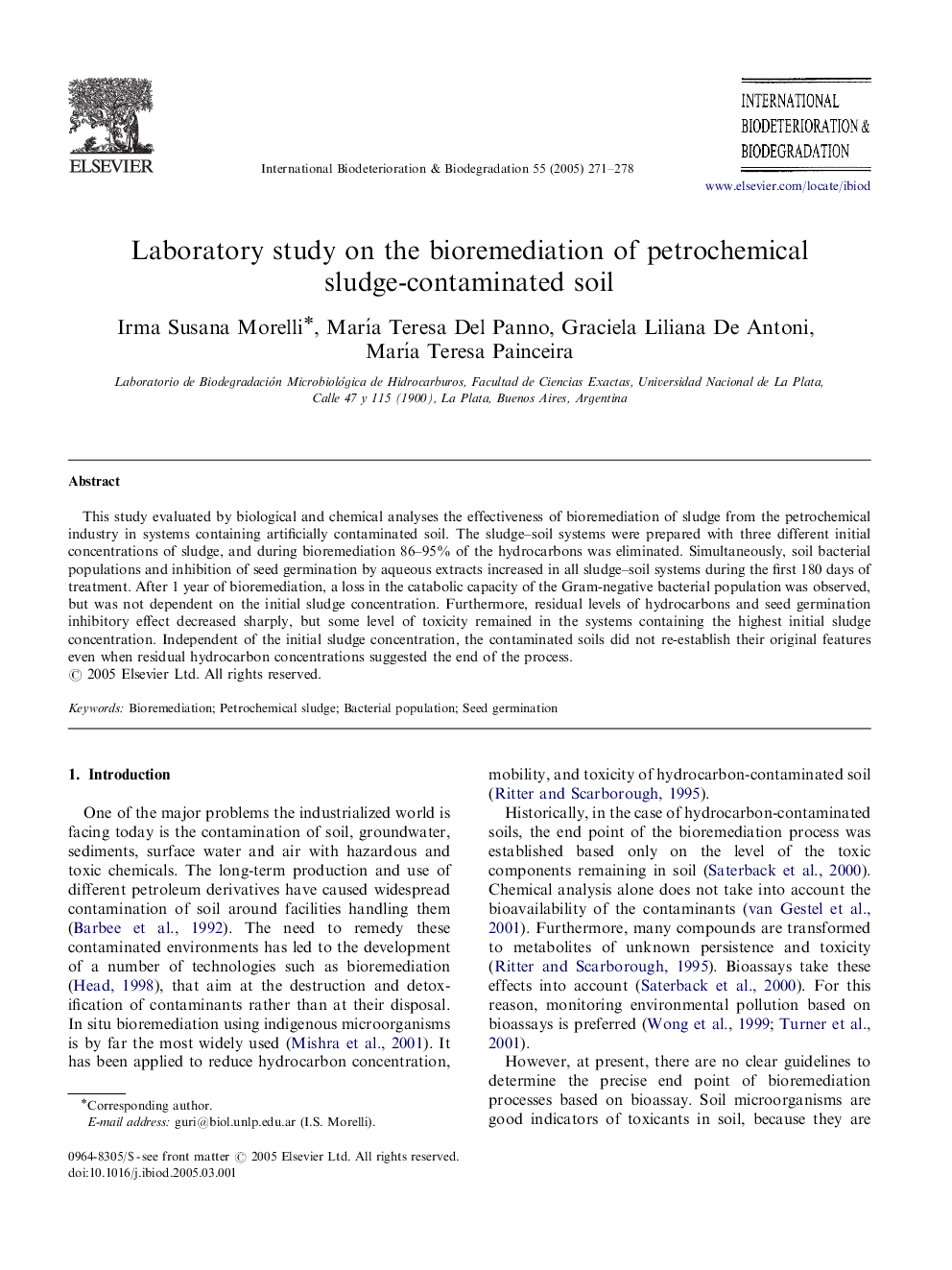| Article ID | Journal | Published Year | Pages | File Type |
|---|---|---|---|---|
| 9442172 | International Biodeterioration & Biodegradation | 2005 | 8 Pages |
Abstract
This study evaluated by biological and chemical analyses the effectiveness of bioremediation of sludge from the petrochemical industry in systems containing artificially contaminated soil. The sludge-soil systems were prepared with three different initial concentrations of sludge, and during bioremediation 86-95% of the hydrocarbons was eliminated. Simultaneously, soil bacterial populations and inhibition of seed germination by aqueous extracts increased in all sludge-soil systems during the first 180 days of treatment. After 1 year of bioremediation, a loss in the catabolic capacity of the Gram-negative bacterial population was observed, but was not dependent on the initial sludge concentration. Furthermore, residual levels of hydrocarbons and seed germination inhibitory effect decreased sharply, but some level of toxicity remained in the systems containing the highest initial sludge concentration. Independent of the initial sludge concentration, the contaminated soils did not re-establish their original features even when residual hydrocarbon concentrations suggested the end of the process.
Related Topics
Life Sciences
Environmental Science
Environmental Science (General)
Authors
Irma Susana Morelli, MarÃa Teresa Del Panno, Graciela Liliana De Antoni, MarÃa Teresa Painceira,
